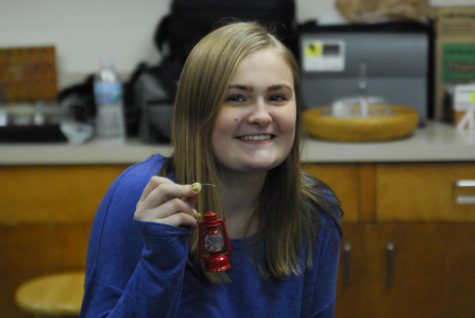Science matters
The Lantern reviews a science lecture at the University of Minnesota
Throughout the galaxy, there are many mysteries. Plenty in which the world cannot even comprehend. The concept of matter flowing through every single person at this very moment is amazing and admittedly disturbing. On October 12th, a highly qualified physicist and astronomer at the University of Minnesota, Professor Presca Cushman, gave a presentation on dark matter, which is matter that cannot reflect light. The lecture began at the very beginning: the Big Bang. In a very brief recap, she explained that if gravity alone, based on mass, was responsible for the solar system rotation, then the planets would have spun out of orbit millions of years ago. Though this theory is controversial, she gave a very convincing argument.
Professor Cushman showed computer generated graphs of her theories and experiments. A larger project that she is working on with a team of scientists was being used to more accurately collect data and detect the amount of dark matter in the solar system. She explained an up and coming project that was in the works. The new lab she showed would allow her team to more accurately find dark matter on a much smaller scale. Diagrams of the building showed it to be located underground due to safety hazards. She broke down each component of the lab and explained why each part was important to their process. I must admit, I was a bit lost during this part because of my lack of background in astronomy and physics. However, Katie Allen, a physics enthusiast, was very attentive and understood much of Professor Cushman’s explanations. “The lecture was really interesting and was presented in a fun way that made it easy for me to follow, especially when it brought up topics I was less familiar with,” exclaims Katie, enthusiastically. “It was really cool to hear from one of the scientists doing the research and how it affects us!” Katie wasn’t the only student to think so. A 10 year old girl from the audience was very intrigued by the lecture and participated in answering questions, even asking some impressive questions of her own.
Not only did she captivate the room packed full of science majors, but she also used a creative vehicle to entice people such as me who know next to nothing about the scientific world. Detective work carried her presentation through with fun metaphors and analogies that wove into scientific explanations and conclusions. She was no stranger to creative puns which was very relatable. Comparative to a crime scene, the vehicle she used to engage the audience consisted of investigating dark matter, collecting the evidence, and discovering the culprate. She had fun with sound effects and visual aids to further explain her point which earned a few chuckles from the audience. The experience was fascinating and allowed me to explore something outside of my comfort zone. Watching Professor Cushman’s presentation showed me the excitement of the scientific world and the importance it holds in the future.

Senior, Laura Johnson, is an Editor-in-chief who enjoys Hulu. Speech and FFA also occupy her free time. She participates in many band activities such as...

